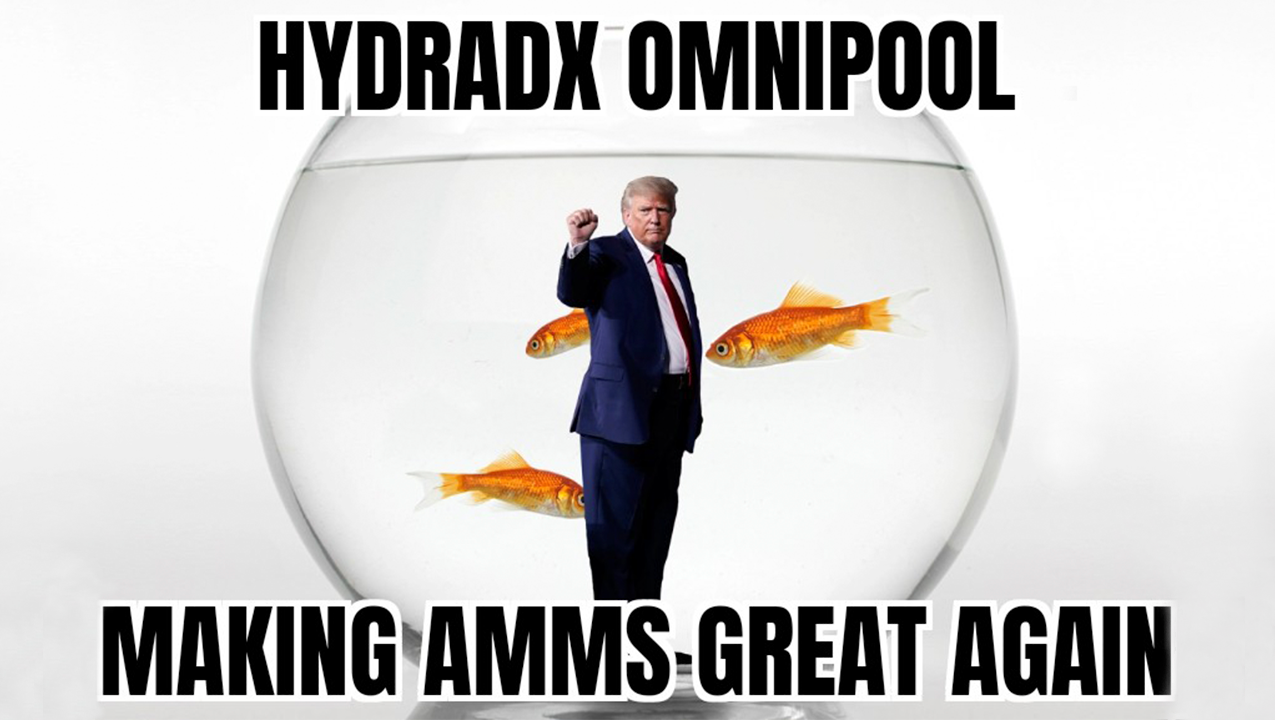In the first post of the Omnipool R&D series, we shared our plan on migrating towards a two-token design as a necessary step towards realizing our unconstrained vision of the Omnipool.
The announcement of the second token, which we provisionally called Liquid HDX (LHDX) for the lack of better naming at the time, led to some confusion in the community. The confusion was rooted in a misunderstanding about the relationship between the pool token and the main protocol token HDX.
Admittedly, we could have prevented much of the confusion if we had elaborated on this relationship in greater detail. Our failure to do so was mainly the result of bad timing (releasing the blog post in the holiday season).
In this post, you will find some much needed missing pieces of information, which will hopefully clarify most of the open questions. After further elaborating on the necessity of the two-token design, we will share with you why the introduction of the pool token is not bad news for HDX hodlers - but actually quite the opposite.
At the end of the post, we wave goodbye to LHDX and say hello to Lerna (LRNA) - the new name of the pool token.
The Rationale behind the Two-Token Design
This decision to migrate towards a two-token model is something that we have been considering for a long time. The choice was made following countless hours of modeling different scenarios, after which it became clear that having the protocol token (HDX) perform liquidity functions would create a serious threat to the governance of the protocol, the protocol itself and last but not least lead to lower or much harder value appreciation of HDX.
As explained in the previous post, when someone provides liquidity to the Omnipool, this results in additional pool tokens being minted to match the added liquidity. Under the old design, one or more whales could use their massive capital to deploy a governance attack and even drain some assets from the Omnipool with little to no price impact - do the CRV wars ring a bell?
The possibility of someone deploying such an attack and taking over the protocol represented a very serious security threat which no longer allowed us to pursue the single token model. Luckily, our research showed that migrating towards a two-token design would resolve most of the issues which we had stumbled upon, and make the position of HDX hodlers ever stronger.
Relationship between HDX and the pool token
HDX remains the main token which represents ownership of the protocol and grants token owners the right to participate in the governance process. The importance of governance in the context of HydraDX cannot be stressed enough.
With the tripling of all HDX balances, the decision-making power of early HDX owners outweighs the voting power of team and investors. This means that any HDX holder can initiate a referendum which, if approved by the larger community, may have far-reaching consequences for the protocol.
Runtime upgrades are the first obvious example of how powerful Substrate governance is. Referenda can be used to push code changes which alter the logic of the Omnipool or any other piece of functionality. In the context of HydraDX, governance gives HDX owners the right to decide the fate of all liquidity held by the protocol. At the time of writing, this includes the 22.9m DAI raised during the HDX LBP, all HDX tokens held by the protocol, as well as the full initial supply of the pool tokens which will be minted by the Omnipool at its genesis. Other important areas where HDX owners will have the final say is deciding which assets are allowed to enter or exit the Omnipool, as well as rates allocation - how much to and to whom?
Besides protecting the protocol from governance attacks, the pool token has a cushioning effect for all HDX hodlers in the case of sudden liquidity spikes. If a whale would enter the Omnipool with a very large position, the resulting excessive minting will result in a fluctuation in the supply of the pool token. Introducing a separate token allows us to keep the HDX supply stable at 10bn and protect HDX owners from the eventual dilution associated with an increased supply.
Rebranding LHDX to Lerna (LRNA)
Long before man had invented chains, a mythical serpent was inhabiting the dark waters of the ancient lake Lerna. Saying goes that it had nine heads - but what was it fighting for? According to the myths, Hydra was the guardian of lake Lerna holding the entrance to a parallel world. Nobody really knows what you can find in this “Underworld”, but our wild guess would be some seriously deep liquidity.
The ancient Greek myth could not serve as a better analogy for the relationship between HDX ownership token and the pool token. Just like Hydra was defending the entrance into the Lerna lake, our Hydraheads which hold HDX are the guardians of the Omnipool and decide which crypto creatures are allowed to enter and what are the rules of the game.
We decided that we should remain true to ancient storytelling and rebrand the pool token from LHDX to Lerna (LRNA). We hope that the new choice of naming is more descriptive of the relationship between the main token HDX and the LRNA pool token, as also represented in the infographic below:






